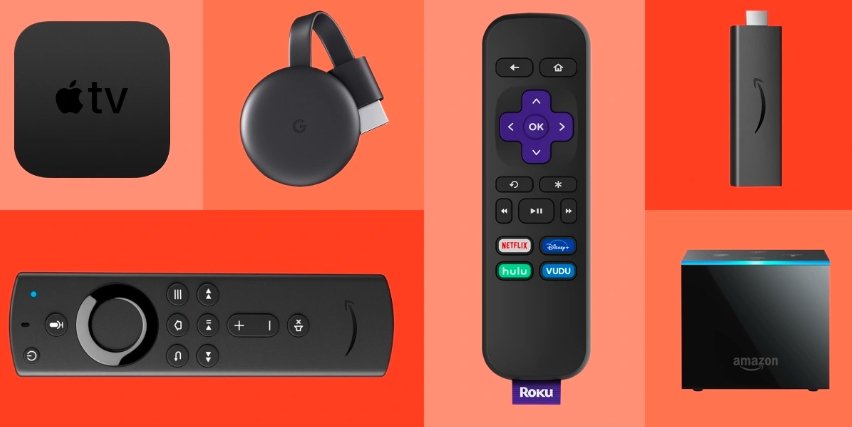Pay-Per-Click (PPC) advertising is a form of digital marketing that allows businesses to pay for their ads to be displayed in search engine results or on websites. It is a great way for businesses to target potential customers in an efficient and cost effective way. PPC advertising has been around since the early 2000s, when search engines such as Google and Yahoo began offering sponsored results. Over the years, PPC advertising has become an incredibly popular marketing tool for businesses of all sizes.
The main benefits of PPC advertising are its cost effectiveness, its ability to reach a large audience quickly, and its ability to generate measurable results. For businesses, PPC advertising can be used to target potential customers who are already interested in their product or service. By targeting potential customers with ads that are relevant to their interests, businesses can increase their chances of converting those customers into paying customers. Additionally, PPC ads can be adjusted and tweaked in real-time, which allows businesses to better optimize their campaigns for maximum effectiveness.
Due to its cost effectiveness, PPC advertising has become a popular tool for businesses of all sizes. It can be used to target potential customers who are already interested in a product or service, and it can also be used to reach a large audience quickly. Additionally, PPC advertising can generate measurable results, allowing businesses to better track and optimize their campaigns. There is no doubt that PPC advertising can be a great asset to any business looking to increase their reach and generate more sales.

Benefits of PPC Advertising
PPC (pay-per-click) advertising has become one of the most effective and efficient ways for businesses to promote their products and services and increase their visibility on the web. Here are some of the key benefits of this marketing strategy: Immediate Visibility and Website Traffic: PPC advertising provides businesses with the chance to get their message out quickly and efficiently. It is a great tool for businesses who want to increase their visibility on the web quickly. PPC campaigns offer businesses the chance to target specific audiences and increase their website traffic and visibility.
Targeted and Qualified Leads: PPC campaigns are highly targeted and offer businesses the chance to reach potential customers who are interested in their product or service. This helps businesses to get better qualified leads and increase their chances of success.
Cost-Effective Marketing Strategy: PPC advertising is a cost-effective marketing strategy for businesses. Unlike traditional marketing strategies, PPC campaigns are relatively inexpensive and offer businesses the chance to get their message out quickly and target specific audiences. This helps businesses to maximize their return on investment and minimize their overall costs.
Control over Budget and Ad Spend: PPC campaigns offer businesses the chance to control their budget and ad spend. Businesses can set their own budget and adjust their ad spend as needed. This allows businesses to control their costs and maximize their return on investment.
Overall, PPC advertising is an effective and efficient marketing strategy for businesses who want to increase their visibility on the web quickly and reach potential customers who are interested in their product or service. It offers businesses the chance to target specific audiences, control their budget and ad spend, and maximize their return on investment.
Understanding the PPC Advertising Model
Overview of how PPC Advertising Works
Pay-per-click (PPC) advertising is an online advertising model in which advertisers pay a fee each time their advertisement is clicked. PPC advertising is used to generate leads and drive website traffic. It works by allowing advertisers to bid on keywords relevant to their products and services. When a user searches for those keywords, the most relevant ads are displayed. The advertiser with the highest bid is awarded the position of the ad.
Importance of Ad Placement and Ad Targeting
Ad placement and targeting are important elements of PPC advertising. Ad placement is the process of deciding where to place the ads. It involves understanding the customer’s needs, preferences, and interests, as well as the type of content the customer is looking for. Ad targeting is the process of pinpointing the right audience for the ads. It involves understanding the demographics, interests, and behaviors of the target audience. This helps to ensure that the ads are seen by the right people.
Factors that Impact Ad Performance
There are several factors that can have an impact on the performance of a PPC ad. These include the relevancy of the ad to the user’s search query, the quality of the ad copy, the quality of the landing page, the targeting of the ad, and the bid amount. All of these factors need to be taken into account to ensure that the ad is performing as well as possible.
Creating Effective PPC Campaigns
Keyword research and selection:
The first and foremost step to creating an effective PPC campaign is to research and select the right keywords. It is important to understand the audience, their needs and interests and the right phrases or words associated with the product or service. A thorough keyword analysis is essential to identify the most relevant and profitable keywords. The aim should be to use competitive, relevant and targeted keywords that will help to reach the right audience and generate the desired results.
Ad copywriting and design:
Once the keywords are identified, the next step is to create an effective ad copy and design. The ad copy should be written in a compelling manner and should include the relevant keywords. It should be able to grab the attention of the audience and should be able to convey the message clearly. Along with the ad copy, the design should be attractive and should contain relevant visuals to make it stand out.
Landing page optimization:
The landing page or destination page is an essential part of the PPC campaigns. It should be optimized to ensure a better user experience. The landing page should be designed to match the ad copy and should be able to convert the visitors into customers. It should be able to provide the user with relevant information and should also include the relevant keywords to ensure better search engine rankings.
Measuring and Analyzing PPC Success
Measuring the success of a pay-per-click (PPC) campaign is essential for determining whether or not it is performing as expected. The metrics used for measuring success can be divided into two categories: user engagement and return on investment (ROI). User engagement metrics include the click-through rate (CTR), the cost per click (CPC), and the conversion rate (CR). CTR measures the number of times users have clicked on an ad compared to the total number of impressions. CPC measures the average cost that is paid for each click on the ad. CR measures the number of times users have taken a desired action (e.g., buying a product or signing up for a newsletter) compared to the total number of impressions.
ROI measures the total return of a campaign compared to its total cost. This includes both the direct costs, such as ad spend, and the indirect costs, such as the time and resources required to create and manage the campaign. The ROI helps marketers understand if the campaign is generating more money than it is costing.
Tools such as Google Ads and Bing Ads can be used to track and analyze the performance of PPC campaigns. They provide detailed reports about the performance of the campaign, including the number of impressions, clicks, and conversions. This data can be used to measure the success of the campaign, as well as to identify areas of improvement.
Once the performance of the campaign has been measured and analyzed, marketers can make adjustments to the campaign to improve its performance. This may include changing the budget, targeting different audiences, and/or testing different ads. By regularly measuring and analyzing the performance of the campaign, marketers can ensure that their PPC campaigns are running as efficiently and effectively as possible.
Best Practices for PPC Advertising
Ad Testing and Optimization:
Ad testing and optimization is at the heart of effective PPC advertising campaigns. It involves creating multiple ad variations to measure which ad is performing best, and then optimizing the ads based on the performance. This process should be done on a regular basis, using insights from analytics and customer feedback. To ensure that ads are being tested and optimized effectively, it’s important to have an organized system for tracking and analyzing results.
Negative Keywords and Targeting:
Negative keywords are words and phrases that are used to exclude certain search terms from being triggered by a PPC ad campaign. This helps to refine the targeting of ads and prevent them from being shown to irrelevant audiences. Negative keywords should be reviewed and updated regularly to ensure that ads are being shown to the right people. Targeting should also be adjusted, as needed, to ensure that ads are being shown to the most relevant audiences.
Ad Scheduling and Bidding Strategies:
Ad scheduling and bidding strategies are important for optimizing the performance of a PPC ad campaign. Ad scheduling involves adjusting the times and days when ads are shown, and bidding strategies involve setting the maximum amount that will be paid for each click. Both of these strategies should be adjusted in accordance with the goals of the campaign, and they should be monitored regularly to ensure that the desired results are being achieved.
Future of PPC Advertising
PPC advertising has grown exponentially over the years and is now an integral part of most businesses’ digital marketing strategies. As technology advances, so too does the potential for PPC. Here are some emerging trends and technologies in PPC advertising, and potential impacts on businesses and their strategies.
• Machine Learning: Machine learning technology is becoming increasingly common in PPC. It enables businesses to use algorithms to analyze data from campaigns in order to make more informed decisions about which ads to run, where to target them, and how much to bid for each keyword. This technology can save time and money, as well as improve the overall performance of campaigns.
• Artificial Intelligence: AI is also being used to optimize PPC campaigns. AI algorithms are able to analyze data and make decisions about which ads to show, when to show them, and how much to bid for each keyword. AI can also be used to analyze user behavior and create more targeted campaigns.

• Changes in Platforms and Practices: PPC platforms such as Google Ads and Bing Ads are continually updating and changing their practices. This could have a significant impact on businesses and their strategies, as they need to stay up to date with the latest changes and updates. Additionally, businesses should be aware of any changes in the targeting options available, as well as any new features or tools that could help them to improve their campaigns.
• Potential Impact on Businesses and Strategies: As technology advances, businesses will need to be aware of any potential changes to the way they use PPC advertising. They should also consider how to use new features and tools to their advantage, and how to adjust their strategies to take advantage of changes. Additionally, businesses should be aware of any potential changes in the way users interact with their ads, as this could have a major impact on their campaigns.
Conclusion
Pay-for-performance (PPC) advertising has become an increasingly popular form of advertising in the digital age. It offers many advantages to businesses, including increased reach, cost efficiency, and scalability. It offers the opportunity to target specific audiences at the right time and place and to measure the success of campaigns in real time. Additionally, it provides businesses with the ability to adjust campaigns as needed in order to optimize their return on investment (ROI). Ultimately, PPC advertising offers businesses a cost-effective and efficient way to reach customers, increase brand awareness, and drive more sales. As more businesses recognize the value of PPC advertising, it is becoming an essential part of any comprehensive digital marketing strategy. By leveraging PPC advertising, businesses can take advantage of its many benefits and maximize their ROI.
FAQs
1. What is Pay-Per-Click (PPC) Advertising?
Pay-per-click (PPC) advertising is a type of digital marketing where businesses pay for each click on their ads. With PPC, businesses bid on relevant keywords and phrases that their target audience might search for, and their ads will appear in search engine results when those keywords and phrases are used.
2. What are the Benefits of PPC Advertising?
The main benefit of PPC advertising is that it can provide a much quicker return on investment than other types of marketing. PPC ads also offer businesses the ability to target their ideal audience more precisely, as well as the ability to track and measure the results of their campaigns.
3. How Much Does PPC Advertising Cost?
The cost of PPC advertising can vary greatly depending on the industry and the keywords being targeted. Generally, the more competitive the keywords, the more expensive they will be.
4. What is a Good PPC Advertising Strategy?
A good PPC advertising strategy starts with keyword research to determine which keywords are the most relevant to your business. Once you have identified the best keywords to target, you can then create ads that are tailored to those keywords. It is also important to set a budget and to track and measure the performance of your campaigns.
5. How Can I Improve My PPC Advertising Results?
Improving your PPC advertising results can be achieved by optimizing your ad campaigns and landing pages, testing different ad copy, and using audience segmentation to target the most relevant audience.
6. What is the Difference Between PPC and SEO?
The main difference between PPC and SEO is that SEO is a long-term strategy, while PPC is a more immediate result. SEO works to improve your organic search engine rankings, while PPC allows you to pay for a spot at the top of the search engine results pages.
7. How do I Create a PPC Advertising Campaign?
Creating a PPC advertising campaign involves setting up an account with a search engine or an advertising platform like Google Ads or Microsoft Advertising, researching and selecting relevant keywords, and creating ads that are tailored to those keywords.
8. What is Remarketing and How Does it Work?
Remarketing (also known as retargeting) is a type of online advertising where businesses target ads to users who have previously visited their website. This is done by placing a tracking pixel on the website, which allows the business to serve ads to those users as they browse the internet.
9. What is a Quality Score and How Does it Impact My PPC Advertising?
Quality Score is a metric used by search engines to determine the relevance and quality of an ad. A higher Quality Score can lead to lower costs and higher ad rankings, while a lower Quality Score can lead to higher costs and lower ad rankings.
10. What is Conversion Rate Optimization (CRO) and How Does it Help My PPC Advertising?
Conversion rate optimization (CRO) is the process of optimizing a website to increase the percentage of visitors who take a desired action, such as making a purchase or signing up for a newsletter. CRO can help improve the performance of your PPC campaigns by optimizing the landing pages for your ads to ensure they are more effective at converting visitors.


















